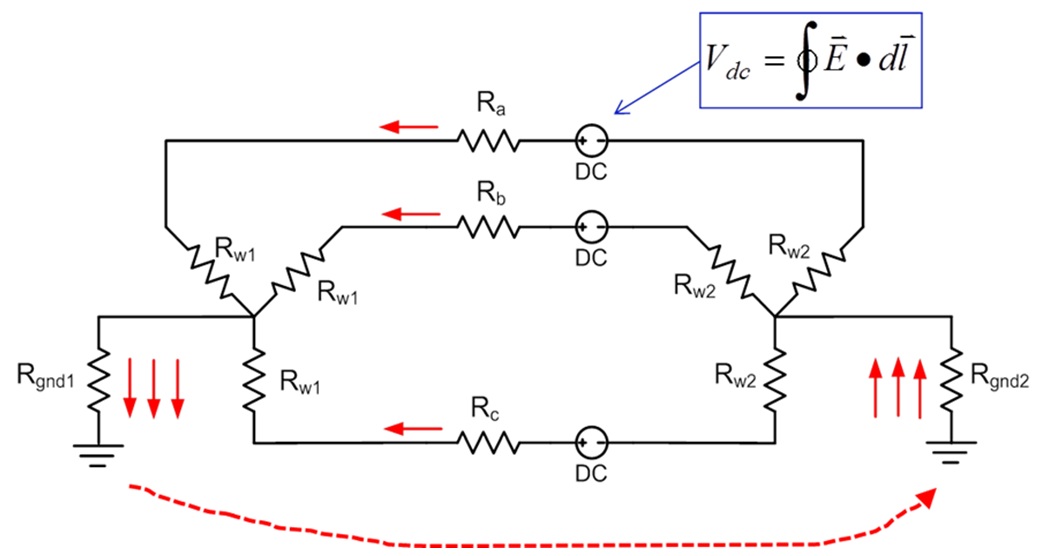Geomagnetically Induced Current (GIC)
Evaluate the Risk Posed by Solar Storms and Nuclear High-Altitude Electromagnetic Pulse (HEMP E3) with PowerWorld Simulator
PowerWorld has developed an innovative tool for analyzing the potential impact of geomagnetic disturbances (GMD), using our familiar power flow and transient stability platform. PowerWorld Simulator GIC may be the most accessible tool in the world for power system planning and operations engineers to readily assess GMD risk posed to their systems.
Download the GIC Quick Start Guide, sample cases, and free demo version of Simulator.
Simulator GIC supports automatic application of Earth resistivity and geomagnetic latitude scaling per NERC TPL-007-4
The GMD threat is real. A 1989 event caused widespread outages on the Hydro Quebec system, but this event was much smaller and less intense than a 1921 event that occurred prior to widespread electrification. If such a super storm strikes today’s power grids, outages and equipment damage could be unprecedented. A February 2012 NERC report[1] contains several recommendations, including development of procedures and training for managing the effects of GMD events and enhancement of simulation tools and models to support the ongoing study of GMD impacts.
Power systems are vulnerable to time and spatial variations in dc voltages caused by GMD. Induced currents flow through circuits formed by a high-voltage transmission line, a grounded transformer, the earth, and another grounded transformer at the far end of the transmission line. The dc bias can force transformers to saturate for part of the normal ac cycle, causing harmonics, equipment damage, failure of protection schemes, reactive power loss, voltage instability, and potential large-scale voltage collapse.
Effect of GMD can be modeled as DC sources in transmission lines.
By integrating GIC calculations directly within PowerWorld Simulator, power engineers can readily see the impact of GIC on their systems and consider mitigation options.
Model Inputs
GIC calculations use common power flow and fault analysis parameters, such as:
- line resistance
- transformer grounding configuration, and
- generator step-up transformer parameters.
A few less common parameters are also required:
- substation grounding resistance
- transformer coil resistance
- proper identification and winding characteristics of auto-transformers and three-winding transformers, and
- substation assignment of buses and geographic coordinates of substations
These parameters can be estimated or defaults applied when actual values are not available. PowerWorld can provide geographic coordinates for the three primary North American planning models.
GMD-induced electric fields must also be provided, corresponding to a simulated GMD event or storm scenario. These may be industry data sets or auto-generated by Simulator. NERC TPL-007-4 specifies study of the Benchmark GMD Event and Supplemental GMD Event, consisting of geospatially uniform geomagnetic disturbances where the electric field magnitude varies with local earth resistivity and geomagnetic latitude. PowerWorld Simulator can quickly auto-generate uniform electric field models, with the option to automatically scale the magnitude according to the parameters of the TPL-007-4 Benchmark GMD Event and Supplemental GMD Event. (See this knowledge base article for earth resistivity scaling models for the US and Canada.)

Peak surface electric field magnitude of the NERC Benchmark GMD Event: 8 V/km at 60 degrees north geomagnetic latitude and Canadian Shield earth resistivity.
It can also incorporate non-uniform and time-varying electric fields with direct input of transmission line DC voltage inputs or with third-party GMD event models.

Geo-spatially varying surface electric field simulated based on conditions of March 12, 1989 geomagnetic disturbance. Surface electric field inputs to PowerWorld Simulator GIC are provided by Atmospheric and Environmental Research, a unit of Verisk Climate.

Simulated per-unit voltage drops for the same period during the March 12, 1989 disturbance. Results are illustrative only; actual model parameters will improve accuracy.
Resources and Knowledge Base:
- Training Slides
- Substation and transformer data requirements, with a sample spreadsheet template
- Time series inputs for NERC Benchmark GMD Event and Supplemental GMD Event
- Transformer GIC thermal response calculation spreadsheet
- Integrated GIC Harmonics Modeling
- Using PowerWorld Simulator for High Altitude Electromagnetic Pulse (HEMP) E3 Modeling and Mitigation Plan Design for Large-Scale Electric Grids, Thomas Overbye, PowerWorld Corporation (Support Files: Case, E-Field Description (b3d))
- Surface E-field models for historic GMD events (provided by NOAA Space Weather Prediction Center)
Other Information:
- NERC Standard TPL-007-4: Transmission System Planned Performance for Geomagnetic Disturbance Events, North American Electric Reliability Corporation (NERC), Draft 1: March 19, 2020.
- Application Guide for Computing GIC in the Bulk Power System, North American Electric Reliability Corporation (NERC), December 2013. 6-bus sample case described in Appendix II.
- Benchmark Geomagnetic Disturbance Event Description, North American Electric Reliability Corporation (NERC), May 12, 2016. Earth Resistivity Scaling Models for PowerWorld Simulator GIC
- Supplemental Geomagnetic Disturbance Event Description, North American Electric Reliability Corporation (NERC), June 2017.
- FERC Order 779: Reliability Standards for Geomagnetic Disturbances, May 16, 2013.
- 2012 Special Reliability Assessment Interim Report: Effects of Geomagnetic Disturbances on the Bulk Power System, NERC, February 2012.
- Quick Start Guide and sample cases: The 4-bus example will work on the free demo version of Simulator.
- T.J. Overbye, K.S. Shetye, T.R. Hutchins, Q. Qiu, J. Weber, “Power Grid Sensitivity Analysis of Geomagnetically Induced Currents,” Submitted to IEEE Transactions on Power Systems, March 2013.
- T.J. Overbye, T.R. Hutchins, K. Shetye, J. Weber, S. Dahman, “Integration of Geomagnetic Disturbance Modeling into the Power Flow: A Methodology for Large-Scale System Studies,” North American Power Symposium, September 2012.
[1] North American Electric Reliability Corporation, “2012 Special Reliability Assessment Interim Report: Effects of Geomagnetic Disturbances on the Bulk Power System”, February 2012.


